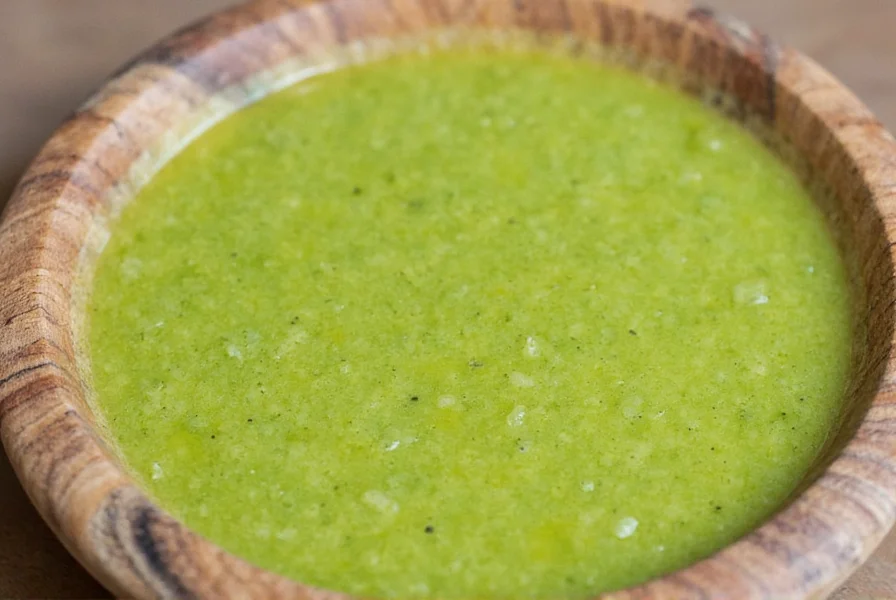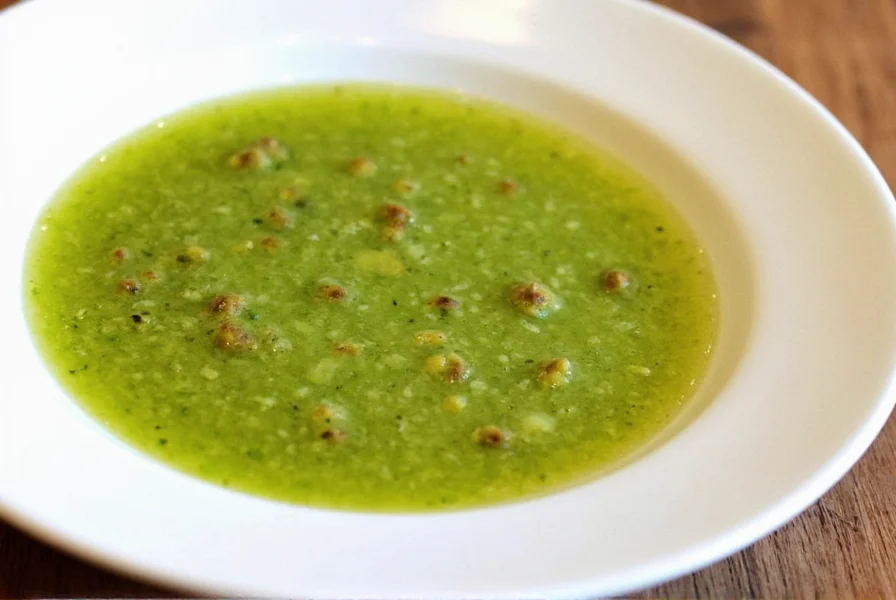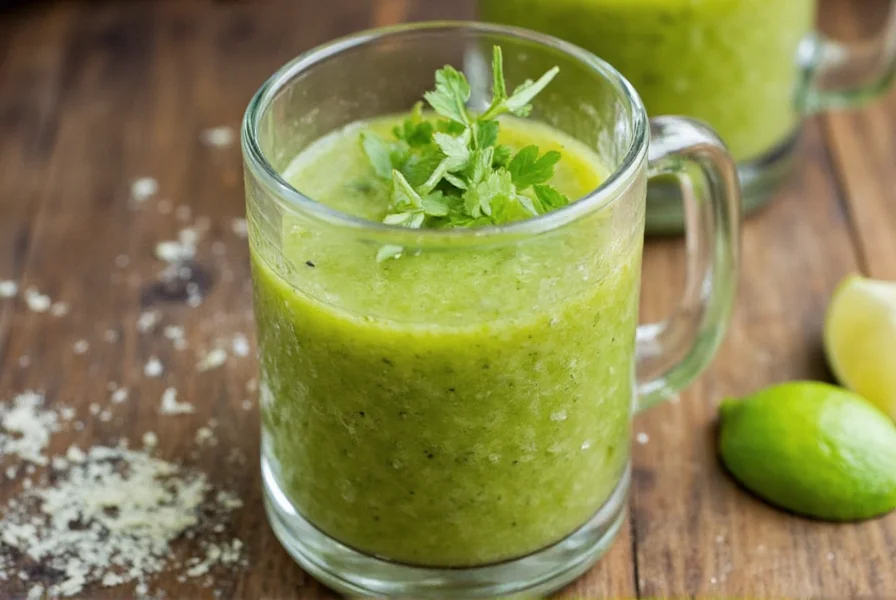Creating the perfect coriander lime vinaigrette requires understanding the delicate balance between fresh ingredients and proper emulsification. This versatile dressing elevates simple dishes with its bright flavor profile while offering numerous customization options based on your culinary preferences.

Essential Ingredients for Authentic Flavor
The magic of a superior coriander lime vinaigrette comes from using fresh, high-quality ingredients. Unlike store-bought alternatives, homemade versions allow you to control the flavor intensity and avoid preservatives. Here's what you'll need for a standard batch serving 4-6 people:
| Ingredient | Quantity | Notes |
|---|---|---|
| Fresh cilantro (coriander) | 1 cup packed | Stems removed, only leaves and tender stems |
| Fresh lime juice | 3 tablespoons | Approximately 1-2 limes, freshly squeezed |
| Extra virgin olive oil | 1/2 cup | Use high-quality for best flavor |
| Garlic | 1 clove | Minced or pressed |
| Honey or agave | 1 teaspoon | Optional for balanced sweetness |
| Ground cumin | 1/4 teaspoon | Freshly ground preferred |
| Sea salt | 1/2 teaspoon | Adjust to taste |
| Black pepper | 1/4 teaspoon | Freshly ground |
Step-by-Step Preparation Guide
Follow these simple steps to create a perfectly balanced coriander lime vinaigrette that won't separate:
- Prepare fresh ingredients: Wash and thoroughly dry cilantro. Remove thick stems, keeping only the leaves and tender upper stems. Juice limes immediately before making the dressing for maximum freshness.
- Combine base ingredients: In a blender or food processor, combine cilantro, lime juice, garlic, honey (if using), cumin, salt, and pepper. Blend until smooth.
- Emulsify properly: With the blender running on low speed, slowly drizzle in olive oil. This gradual addition creates a stable emulsion that prevents separation.
- Adjust seasoning: Taste and adjust salt, lime, or sweetener as needed. For a thinner consistency, add 1-2 teaspoons of water.
- Rest before serving: Let the dressing sit for 15-20 minutes to allow flavors to meld before using.
Pro Tips for Perfect Results
Professional chefs recommend these techniques to elevate your coriander lime vinaigrette:
- Use room temperature ingredients: Cold ingredients don't emulsify as well, leading to separation.
- Balance acidity: If your limes are particularly tart, increase sweetener slightly to balance the flavor profile.
- Texture matters: For a smoother dressing, blend longer. For a more rustic texture with visible cilantro flecks, pulse briefly.
- Garlic intensity control: Roast the garlic clove first for a milder, sweeter flavor, or use 1/2 clove for less pronounced garlic taste.
Ideal Pairings for Coriander Lime Dressing
This versatile dressing complements numerous dishes beyond standard green salads. Consider these pairing suggestions when planning your next meal:
- Salads: Mixed greens with avocado, black beans, and grilled corn; quinoa salad with roasted sweet potatoes; shredded cabbage slaw
- Proteins: Grilled chicken or fish tacos; shrimp ceviche; roasted salmon; grilled flank steak
- Vegetables: Roasted sweet potatoes; grilled zucchini and bell peppers; steamed asparagus; roasted cauliflower
- Grains: Cilantro lime rice; quinoa bowls; couscous salad; Mexican street corn salad

Storage and Shelf Life Information
Proper storage ensures your homemade coriander lime vinaigrette maintains freshness and flavor:
- Refrigeration: Store in an airtight container for up to 5 days. The fresh cilantro will gradually darken but remains safe to consume.
- Separation is normal: Natural separation occurs with oil-based dressings. Simply shake or whisk before each use.
- Freezing option: Freeze in ice cube trays, then transfer to freezer bags for up to 2 months. Thaw in refrigerator before use.
- Signs of spoilage: Discard if you notice mold, off odors, or significant color changes beyond normal darkening of cilantro.
Popular Variations to Try
Customize your coriander lime vinaigrette to match different culinary themes:
- Creamy version: Add 2 tablespoons Greek yogurt or avocado for a richer texture
- Spicy kick: Incorporate 1/4 teaspoon chipotle powder or a few dashes of hot sauce
- Tropical twist: Add 2 tablespoons fresh mango or pineapple puree
- Herb variation: Substitute half the cilantro with fresh mint or parsley
- Oil alternatives: Replace half the olive oil with avocado oil for milder flavor
Common Mistakes to Avoid
Even experienced cooks make these errors when preparing coriander lime dressing:
- Using dried cilantro: Dried herbs cannot replicate the fresh flavor profile essential to this dressing
- Rushing the emulsification: Adding oil too quickly causes separation; maintain slow, steady drizzle
- Over-blending: Excessive blending can make cilantro bitter; pulse just until combined
- Using bottled lime juice: Freshly squeezed lime juice provides superior flavor and acidity balance
- Skipping the resting period: Allowing flavors to meld significantly improves the final taste
Frequently Asked Questions
Can I make coriander lime vinaigrette without a blender?
Yes, you can make coriander lime vinaigrette without a blender. Finely chop the cilantro by hand, then vigorously whisk all ingredients together in a bowl. The key is to add the olive oil very slowly while continuously whisking to create an emulsion. A small jar with a tight-fitting lid also works well - add all ingredients and shake vigorously until well combined.
Why does my coriander lime dressing separate?
Separation occurs when the emulsion breaks, which happens for several reasons: adding oil too quickly, using cold ingredients, or insufficient blending time. To fix separation, place 1 tablespoon of the separated mixture in a clean bowl and slowly whisk in the remaining dressing. For prevention, ensure all ingredients are at room temperature and add oil gradually while the blender runs continuously.
What's the difference between coriander and cilantro in vinaigrette?
Coriander and cilantro refer to the same plant (Coriandrum sativum). In American English, "cilantro" describes the fresh leaves and stems, while "coriander" typically refers to the dried seeds. Internationally, "coriander" often describes the entire plant. For this vinaigrette, you need the fresh leaves (called cilantro in the US, coriander leaves elsewhere), not the seeds. Using coriander seeds instead would create a completely different flavor profile.
How can I make my coriander lime vinaigrette last longer?
To extend your coriander lime vinaigrette's shelf life, ensure all equipment is completely dry before preparation, use freshly squeezed lime juice (bottled contains preservatives that can affect freshness), and store in a sterilized glass container. Adding 1/4 teaspoon of citric acid can help preserve color and freshness. For maximum shelf life, freeze portions in ice cube trays then transfer to freezer bags, where it will maintain quality for up to 2 months.
Can I use this dressing as a marinade?
Absolutely. Coriander lime vinaigrette makes an excellent marinade for chicken, fish, shrimp, and vegetables. The acid in the lime juice helps tenderize proteins while the herbs infuse flavor. For best results, marinate proteins for 30 minutes to 2 hours (no longer for fish, up to 4 hours for chicken). Always reserve some dressing for serving - never reuse marinade that has contacted raw meat.











 浙公网安备
33010002000092号
浙公网安备
33010002000092号 浙B2-20120091-4
浙B2-20120091-4